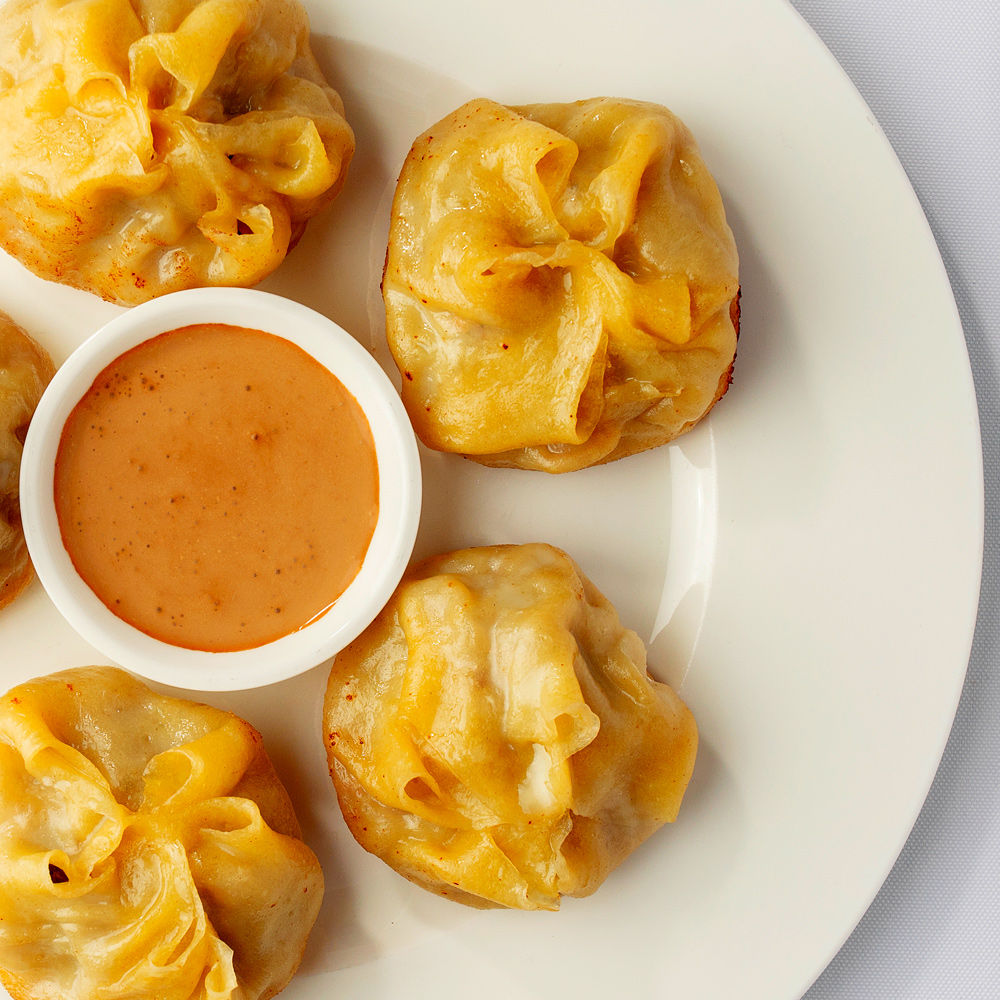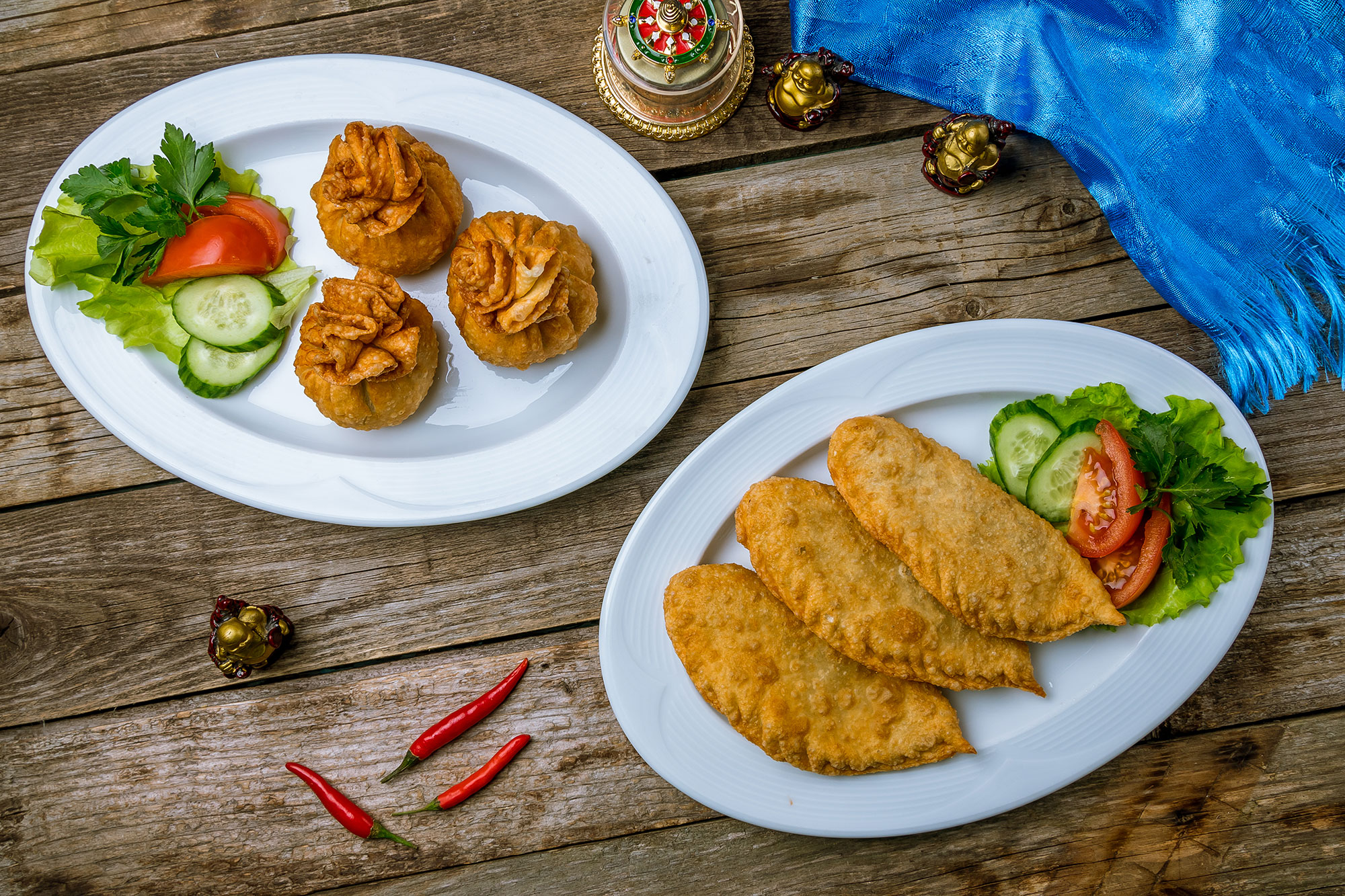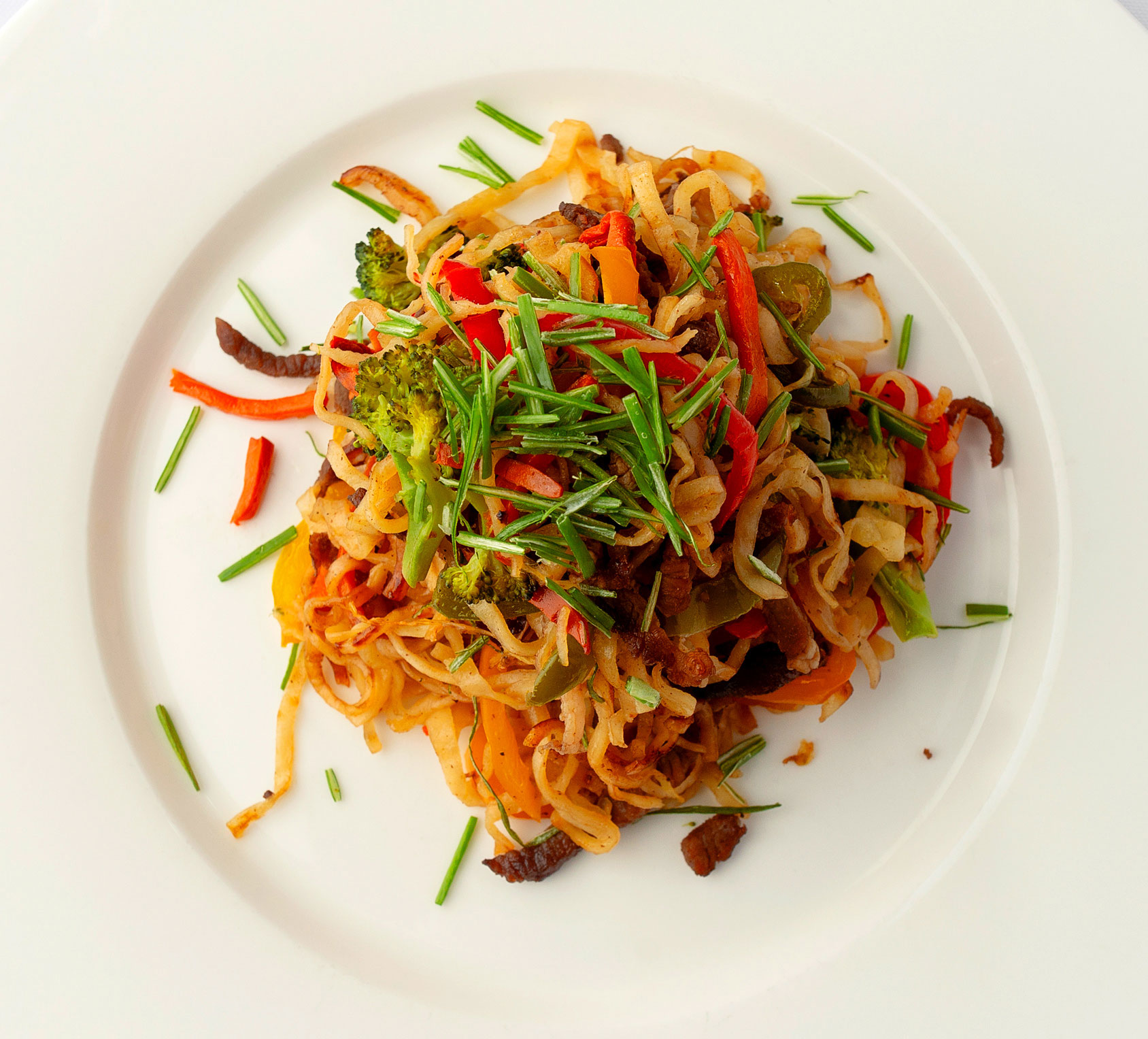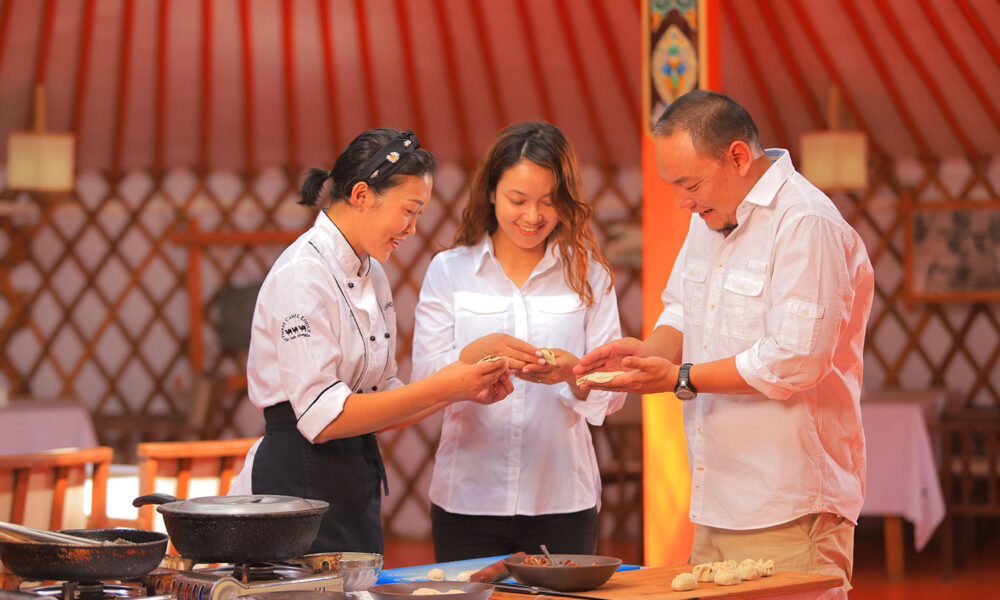Mongolian cuisine is a reflection of the country’s deep-rooted nomadic traditions—shaped by the rhythms of nature, close ties to livestock, and a lifestyle built around community and self-reliance. With ingredients drawn from the land and herds, meals are centered on meat, dairy, and grains—simple, nourishing, and deeply satisfying. This hearty fare isn’t just practical; it’s full of meaning. From hand-folded dumplings served during Tsagaan Sar (Lunar New Year) to khorkhog cooked with hot stones for festive gatherings, each dish carries the essence of Mongolian hospitality and celebration. Whether you’re dining in a countryside ger or one of Ulaanbaatar’s growing number of restaurants, every dish offers a window into the history, values, and enduring spirit of the Mongolian people.
The traditional Mongolian diet evolved out of a life lived on the move. For nomadic families, food needed to be quick to prepare, energy-rich, and made from ingredients that were readily available. Livestock provided nearly everything—meat, milk, cheese, fat—and this access shaped a cuisine built around nourishment and practicality. While the meals may seem simple to Western travelers, they are deeply tied to the endurance, adaptability, and resourcefulness of nomadic life.
The Classics You Must Try
Start with the national staples:

Buuz
Steamed dumplings filled with minced mutton or beef, cooked so the meat simmers in its own savory juices. Eaten by hand, each bite is a juicy burst of flavor.

Khuushuur
A crispier, deep-fried version of buuz, these golden meat pies are a local favorite, especially during festivals like Naadam.

Tsuivan
A hearty noodle dish stir-fried with meat and vegetables, then steamed to lock in flavor. It’s Mongolian comfort food at its best.
To accompany these classics, sip on suutei tsai, a warm, lightly salted milk tea that Mongolians drink throughout the day. And for the bold, there’s airag—fermented mare’s milk that’s slightly fizzy and sour. It’s not for everyone, but it’s certainly a rite of passage (think of it as Mongolia’s answer to Scotch).
Beyond the Basics: Dive Deeper into Mongolian Cuisine
Mongolia’s culinary traditions stretch far beyond dumplings and noodles. For a true taste of the countryside, seek out these time-honored dishes:
- Khorkhog – Chunks of lamb cooked with hot stones inside a sealed metal container, creating a smoky, tender stew.
- Boodog – A whole goat or marmot cooked from the inside out using hot stones, often served during special celebrations.
- Guriltai Shul – A warming noodle soup made with handmade flour noodles, meat, and a light broth.
- Byaslag – A mildly salty Mongolian cheese, often served with aaruul, dried yogurt curds with a tangy flavor.
- Camel or yak meat dishes – Especially in the Gobi and mountainous regions, these meats are prepared in stews or roasted, offering rich, distinctive flavors.
- Wild berry jams and yak cream – Seasonal treats found in more remote regions, often served with bread or sweets.
- Sea buckthorn juice – Tart and vitamin-rich, this bright orange berry is turned into juice, tea, desserts, and candies all over Mongolia.
Where to Eat in Ulaanbaatar
Ulaanbaatar is the perfect place to explore both traditional fare and the city’s growing international food scene.
For a comprehensive introduction to Mongolian classics, head to:
- Modern Nomads – A long-standing favorite for travelers, known for its reliable versions of buuz, khuushuur, and more.
- Mongolian’s Restaurant – Serving up traditional meals in a cozy, rustic setting.
- The Bull – A beloved hot pot chain where you cook your own meats, noodles, and vegetables at the table—an interactive, warming experience.
- BD’s Mongolian Grill – While not strictly traditional, this grill-style concept lets you pick your ingredients and sauces, then watch it all stir-fried on a massive circular grill.
For something beyond Mongolian cuisine:
- Hazara – A standout Indian restaurant offering rich North Indian curries, tender tandoori meats, and standout naan.
- Il Fiore – Italian fine dining with fresh pastas and risottos served with sweeping views of the city from atop the Eco Tower.
- Veranda – A European-style bistro with Mediterranean-inspired fare and a great wine list.
- Rosewood Kitchen + Enoteca – A stylish, locally beloved restaurant serving everything from gourmet burgers to handmade pasta and an impressive cocktail menu.
Korean, Japanese, and fusion cuisine are also widely popular in the city, with trendy cafes and contemporary restaurants reflecting Mongolia’s growing cosmopolitan tastes.
Where to Eat Across Mongolia
Beyond the capital, dining becomes more intimate and often more memorable. Many meals are enjoyed in the homes of nomadic families or at countryside ger camps, where hospitality is as warm as the hearth. While menus may be simple, they’re steeped in tradition and authenticity—offering travelers a rare chance to connect with the local way of life.
- Ger Camps & Family Homes – In rural areas, you’re often welcomed into a nomadic family’s ger for a homemade meal. These experiences are less about restaurant menus and more about cultural exchange. Expect hearty stews, fresh dairy, and endless cups of suutei tsai.
- Local Eateries in Provincial Centers – In towns like Kharkhorin, Murun, and Dalanzadgad, you’ll find casual restaurants and diners serving tsuivan, buuz, and other local staples. They may be unassuming, but the food is flavorful and filling.
- Restaurants in Tourist Camps – Many eco-lodges and ger camps catering to travelers, like Three Camel Lodge, offer elevated Mongolian cuisine made with locally sourced ingredients and modern culinary techniques. Meals often blend traditional flavors with international influences.
- Roadside Stops (Zakh and Guanz) – During road journeys, quick meals are often taken at roadside cafes or market stalls. Try a bowl of noodle soup, fried bread, or meat pies served hot and fast. It’s also common to find small shops selling homemade aaruul, boortsog (fried dough cookies), and other local snacks.
Eating in the Mongolian countryside is about more than food—it’s about the people you meet, the landscapes you dine beside, and the centuries-old customs that flavor every bite.
Dining at Three Camel Lodge
Out in the heart of the Gobi Desert, the dining experience at Three Camel Lodge reflects both the traditions of Mongolia and the refinement of world-class hospitality. Our culinary team crafts a rotating menu inspired by local ingredients—serving up hand-folded buuz, tsuivan made with fresh vegetables, and regional specialties like camel meat stew or yak cheese with wild berry jam. Meals are served in our ger-inspired restaurant, where guests dine beneath hand-carved beams and panoramic desert skies.
Whether you’re enjoying a hearty breakfast before heading out to explore ancient petroglyphs, or sipping Mongolian vodka with new friends after sunset, meals at the Lodge are an integral part of your journey—rooted in tradition, prepared with care, and infused with the spirit of the steppe.


